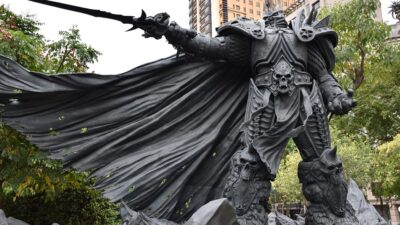StarCraft, Blizzard Entertainment’s iconic real-time strategy game, has captivated millions of players since its release in 1998. At the heart of its enduring appeal are three distinct factions: the Zerg, the Terran, and the Protoss. Each faction is not only unique in gameplay mechanics but also rich in lore, embodying varied themes of struggle, survival, and evolution. This article delves into the intricate dynamics of these factions, exploring their strengths, weaknesses, and the philosophical underpinnings that define them.
The Zerg: Swarm and Adaptation
Overview
The Zerg are a race of insectoid aliens driven by a collective consciousness known as the Overmind, and later the Queen of Blades, Kerrigan. Their primary goal is to assimilate other species’ genetic material to evolve and become stronger, showcasing a relentless ambition to dominate through sheer numbers and adaptability.
Gameplay Mechanics
Zerg gameplay is characterized by rapid production and the ability to overwhelm opponents with sheer numbers. They can mobilize armies quickly due to their ability to spawn units from structures like Hatcheries, and their unique "Creep" mechanic provides tactical advantages on the battlefield.
Strengths:
- Swarming: The Zerg can produce large quantities of units rapidly.
- Mobility: Zerg units like Zerglings and Mutalisks can traverse the map quickly.
- Adaptability: The Zerg can evolve their units based on the enemy they face.
Weaknesses:
- Fragility: Zerg units tend to be less durable compared to their counterparts.
- Economy: A Zerg player must efficiently manage their economy, as overcommitting on units can lead to a weak infrastructure.
Thematic Elements
The Zerg symbolize unending evolution and the hunger for dominance. Their story arcs often revolve around themes of collective identity versus individuality, illustrated through Kerrigan’s character—once a human, now a Zerg Queen. Their ethos questions the cost of power and the morality of survival at any cost.
The Terran: Humanity’s Last Stand
Overview
The Terrans are humans who have been exiled from Earth and have forged a precarious existence in the Koprulu Sector. They represent the archetype of humanity struggling against adversity and embody themes of resilience, ingenuity, and militaristic prowess.
Gameplay Mechanics
Terran gameplay centers around versatility, technological advancements, and strategic positioning. With buildings that can be lifted and moved, they boast a unique ability to adapt their strategies based on the map and opponent.
Strengths:
- Defensive Capabilities: Terran structures can be fortified and have the ability to lift off to avoid destruction.
- Technological Edge: Access to versatile units like Siege Tanks and Battlecruisers, which can turn the tide of battle with precision.
- Flexibility: The ability to adapt to various strategies, switching between offense and defense seamlessly.
Weaknesses:
- Resource-Dependent: Terran units are often more resource-intensive, requiring careful economic management.
- Micro-Management Required: Many Terran units benefit from attentive micromanagement to maximize their effectiveness.
Thematic Elements
The Terrans embody the resilience of humanity facing overwhelming odds. Their narratives often involve betrayal, unity, and the ethical dilemmas of war. Characters like Jim Raynor navigate the gray areas of loyalty and justice, making their stories deeply relatable and emotionally resonant.
The Protoss: The Guardians of Knowledge
Overview
The Protoss are a highly advanced and psionically potent alien race, known for their strong sense of honor and communal identity. They possess advanced technology and are committed to protecting the galaxy from threats, showcasing their deep-rooted spirituality and tradition.
Gameplay Mechanics
Protoss gameplay revolves around powerful, high-cost units with advanced technology. Their units are durable and possess unique abilities that can turn the tide of battle, emphasizing strategic play and efficient resource management.
Strengths:
- Power: Protoss units are robust and capable of dealing significant damage.
- Psionic Abilities: The unique abilities of Protoss units, like the Warp-In mechanic, allow for dynamic gameplay and strategic depth.
- Defensive Constructs: Structures like Pylons and Photon Cannons provide strong defensive capabilities.
Weaknesses:
- High Cost: Protoss units and structures are typically more expensive, requiring careful economic planning.
- Slow Unit Production: The Protoss may struggle to replace lost forces quickly due to their heavy reliance on technology.
Thematic Elements
The Protoss represent a dichotomy of enlightenment and tradition, often grappling with their identity as a warrior race in conflict. Their stories reflect themes of sacrifice, duty, and the pursuit of knowledge, exemplified by characters like Tassadar and Zeratul, who explore the complexities of their legacy.
Conclusion: A Tapestry of Conflict and Cooperation
The dynamics of Zerg, Terran, and Protoss in StarCraft create a rich tapestry of conflict that extends beyond mere gameplay. Each faction offers a unique lens through which players can explore themes of survival, identity, and morality. Their interactions—whether in competitive play or within the game’s expansive lore—serve as a reflection of the broader struggles faced by humanity and, indeed, any civilization.
As players engage in epic battles across the galaxy, they not only enjoy strategic depth but also grapple with the philosophical questions that arise from their choices, ensuring that the legacy of StarCraft endures for generations to come.

